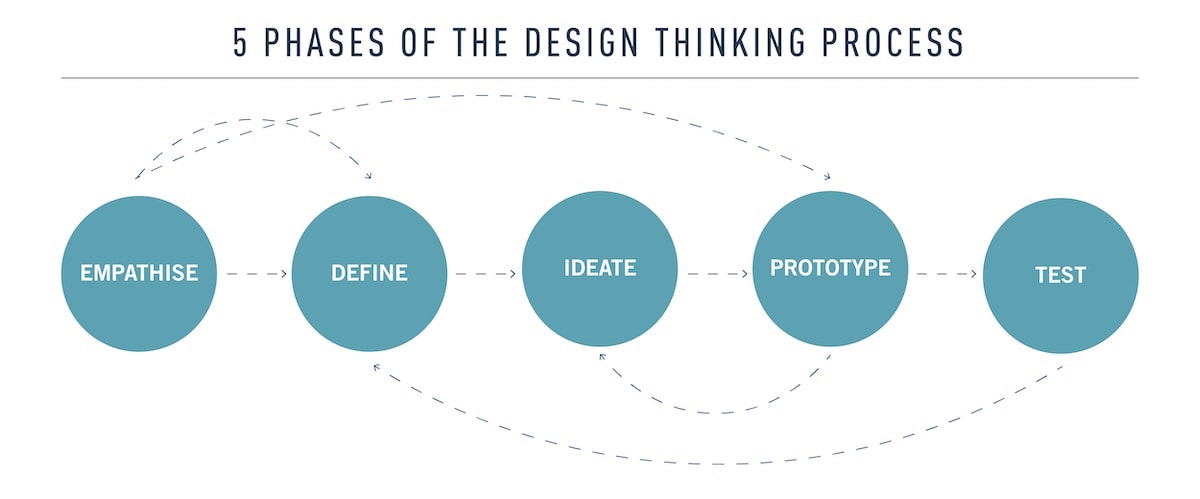The role of the user experience (UX) researcher is becoming more prominent, more specialized, and more in demand.
Uncovering user behaviors, needs, and motivations in order to design products and services that provide value is the crux of user experience research. When performed correctly, these methods have a huge impact on business.
So what is a UX researcher?
In this guide, we’ll take a look at what a UX researcher does and the UX research career path.
Although there is no singular path, there are four main steps to move a UX researcher forward: expanding knowledge of the user research field; obtaining foundational skills; crafting a portfolio; and building a network of industry peers.
Here’s what we’ll cover:
- What is a user experience researcher?
- What does a user experience researcher do?
- What skills are required for a career in UX research?
- How to expand your knowledge of the UX research industry
- How to obtain the necessary foundational skills
- How to craft a convincing portfolio
- How to build a solid network of industry peers
- Final thoughts
1. What is a user experience researcher?
A user experience researcher has their hand on the pulse of user needs and goals. They are the empathetic, organized, critical thinker whose day-to-day is about the first stage of the design thinking process: empathize.

This isn’t to say that UX researchers’ work is totally separate from the rest of the process, but their work has arguably the most humanizing effect on the process. Here’s why— UX researchers know how to:
- Understand the problem or challenge at hand
- Apply a variety of methods and approaches to finding out how their users tick in the context of this problem or challenge
- Listen, observe, and ask the right kinds of questions to gather insights that can be turned into actionable ideas
- Synthesize their findings and communicate them to the rest of the team and to key stakeholders in clear, actionable, and even engaging ways
2. What does a user experience researcher do?
The purpose of the UX researcher (also referred to as “user researcher” or “design researcher”) is to unearth human insights in order to guide the application of design.
According to a recent job posting by IBM, as a design researcher, you will “help provide actionable and meaningful data-driven insights that represent the voice of multiple users. You will collaborate across development, design, and marketing teams to evaluate current and upcoming user research needs that help to improve product definition and drive business goals.”
Some typical tasks and responsibilities of the UX researcher include:
Research Planning and Recruitment
- Develop a well-crafted research plan with clear research objectives.
- Write usability research screeners and discussion guides.
- Recruit targeted end-users for specific research studies.
Data Collection
- Moderate one-on-one basic usability sessions.
- Help develop and implement quantitative surveys.
- Conduct stakeholder and client interviews.
Data Analysis
- Extract insights about user behaviors from web instrumentation tools.
- Translate user insights into actionable recommendations for the product team.
Presentation of Insights
- Craft personas and other “information radiators” (e.g. journey maps) to communicate insights across the design and development teams.
- Present design research findings to the larger team in a clear and organized fashion.
Strategy
- Work closely with the product team to identify research objectives.
- Establish and implement an overall research strategy.
These are just a handful of tasks that belong to UX research. Ultimately, your job as a UX researcher is to build up a picture of your target users based on their needs, wants, motivations, and pain points. These insights enable the wider design team to create user-friendly products based on real user feedback—not just your assumptions.
As with most UX design roles, the UX researcher means different things to different companies.
To learn more about what might be expected of you as a UX researcher, browse various job sites and see how different companies advertise and describe the role. Here are some useful job portals to help you get started:
- UX Jobs Board
- Just UX Jobs
- User Experience Professionals Association
- AIGA Design Jobs
- Indeed
- Glassdoor
3. What skills are required for a career in UX research?
Now we’re familiar with some of the key tasks and responsibilities, let’s consider what skills are required for a career in UX research.
As such, being a UX researcher typically requires knowledge or experience in a relevant field that studies human behavior, such as cognitive science, behavioral economics, anthropology, sociology, or psychology. Ultimately, it’s important to be adept at reading people and empathizing with the user, and equally at home handling data and analytics.
Ideal candidates are typically “passionate, curious, and self-driven team players” who have experience working in fast-paced environments while applying both generative and evaluative research methods to build a larger understanding of users.
It’s also important to have a solid understanding of the design thinking process, as well as a passion and know-how for influencing design strategy.
Obtaining these skills can be done through identifying research opportunities with a current employer, volunteering for a design project with an external organization (e.g. VolunteerMatch), or completing research for a personal project of your own.
Overall, practice makes perfect, and refining these skills as often as you can prepare you for your future role. You can even get a design thinking certification by taking a course or program in the discipline, to show potential employers and clients that you truly know your stuff.
4. How to expand your user research knowledge
As already mentioned, there are four key steps to forging a career in UX research:
- Expand your user research knowledge.
- Obtain the foundational skills.
- Craft a portfolio of experience.
- Build a network of peers.
Let’s start with that first step: Expanding your knowledge of the UX research field. In addition to browsing job descriptions, there are plenty of things you can do to learn more about the industry—but where to begin?
Start with the basics and learn all about UX design in this comprehensive guide, and understand the critical role UX research plays in UX design in this article.
From there, learn about the difference between qualitative, quantitative, attitudinal, and behavioral research. Next, you can familiarize yourself with some common UX research methods, such as card sorting, usability testing, and user interviews.
You’ll find an introduction to some of the most important UX research methods on the CareerFoundry YouTube channel (and be sure to take a look at these free UX research tutorials).
Be sure to watch the video below, in which CareerFoundry graduate and professional UX designer Maureen Herben explains the different techniques and tools used in qualitative user research:
As part of your own research into the UX research field, you’ll also want to consider things such as salary and career options. Sites like Glassdoor and Payscale provide up-to-date salary reports for a range of different locations.
If you can, reach out to people who are already donning the UX researcher job title. Do they tend to work remote or in-house? What kinds of companies employ UX researchers? Again, job sites can help you out here if you don’t have any contacts in the industry (yet!).
Before you commit to the UX researcher route, it’s important to learn as much as you can about the industry and what the role entails.
5. How to obtain the foundational skills necessary for a career as a UX researcher
If you’re keen to forge a career in UX research, you’ll need to start learning some of the key skills. As with any profession, it’s important to build a solid foundation of knowledge before jumping into real-world problem-solving.
Assuming that you already have some knowledge in a related area (cognitive science, sociology, psychology, etc.), there are plenty of ways to learn the fundamentals of user research. Let’s consider those now.
Books
- Human-Computer Interaction: An Empirical Perspective: learn about the foundational topics about one of the precursors to UX design. As well as being a neat introduction to HCI, this book includes historical context, the human factor, interaction elements, and the fundamentals of science and research.
- User Research: A Practical Guide to Designing Better Products and Services: learn about all the key research methods including face-to-face user testing, card sorting, surveys, and A/B testing.
Online resources
Industry blogs are a great way to start learning the ins and outs of the field. Some useful (and trustworthy!) sources include:
Conferences and meetups
If possible, consider attending a UX research conference or a local meetup. You’ll find a list of the top UX research conferences to attend in 2019 here, and can search for local UX research groups on meetup.com.
In addition to the examples above, finding an apprenticeship or a more senior researcher who is willing to let you shadow their process is a great way to immerse yourself in the context of a UX researcher while learning “on the job.”

6. How to craft a convincing UX research portfolio
As with any design role, a compelling portfolio is key to proving you’ve got the right skills for the job. So how do you go about creating a convincing UX research portfolio?
As you practice refining your skills, keep a record of your work to present to future employers. Crafting an online portfolio is a great supplement to a resume or CV when highlighting case studies that show hiring managers what you can do. According to Senior UX Recruiter Tom Cotterill:
“Your portfolio should show cultural suitability for the company where you are applying. Don’t be afraid to add a touch of character or your own style to your portfolio. It’s your chance to wow the hiring manager and demonstrate that you stand out from the crowd.
A good portfolio indicates, in short, that this person has taken time to represent themselves in the best possible light, and they’re clued up enough to showcase their most relevant work in an aesthetic and logical way.”
Ultimately, your portfolio should include the following sections:
- The problem or design challenge your research aimed to solve.
- The team you collaborated with.
- The research process (how did you go about solving the problem?).
- The tools you used to recruit, collect and analyze data, and present insights.
- The final outcome and the handoff of the design for development.
For more insight on how to refine a great UX research portfolio, check out How to Wow Me With Your UX Research Portfolio and How to Create a Powerful Case Study for Your UX Portfolio. Another great resource for inspiration is Bestfolios, the largest curation of best UX research and designer portfolios, resumes, case studies, and design resources.
7. How to build a network within the UX research industry
You’re in the process of mastering the right skills and crafting your portfolio. Now it’s time to network! Networking is one of the best ways to meet people in the UX field and potentially land a new job.
Let’s consider some of the best opportunities for making industry connections.
Current Co-Workers
If you are currently employed, look to see if there are any user experience researchers in your organization, and ask them what it’s like! Also request to shadow them during a research session and take notes.
Future Employers
Informational interviews are also a great way to get candid feedback with people working at great companies, such as IBM, Google, or Amazon. Using LinkedIn or Twitter to find and invite UX researchers for coffee is a solid way to get an idea of what it may be like to work for your company of interest, and also how to get in the door.
Online UX Communities
Actively participate in online UX communities (e.g. Facebook groups) relevant to your professional interests and learning goals. Here are a few to start with:
UX Research Organizations
Lastly, join 1-2 user experience research organizations, such as the User Experience Research Professionals Association or the Design Research Society to see if there are any upcoming events you can attend.
8. Final thoughts
UX is a growing field, and the role of the user experience researcher is becoming more and more pivotal. Equipping yourself with the necessary skills and knowledge, and learning to conduct UX research like a professional, while surrounding yourself with peers in the field who you can learn from are essential to becoming a UX researcher yourself.
Overall, the value of understanding the needs of the customer cannot be ignored, and user experience researchers will have an increasingly valuable role to play in the future of design.
If you’d like to learn more about UX research, check out the following guides:
